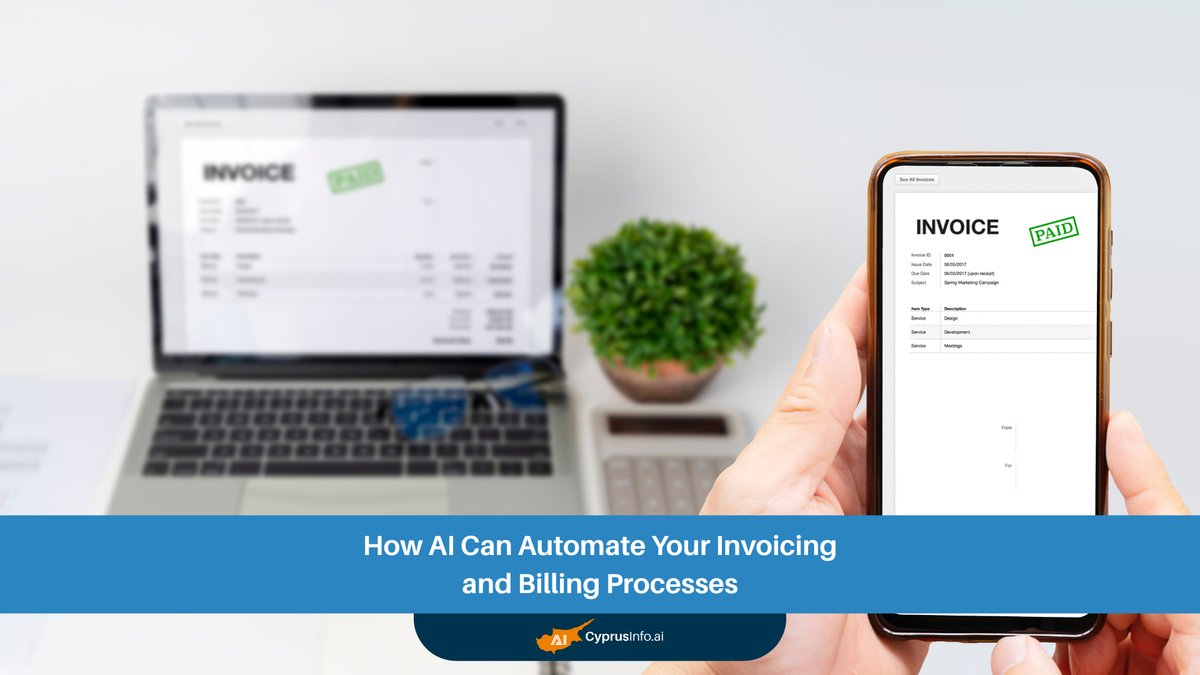In the fast-paced world of modern business, efficiency is no longer a luxury but a necessity. Companies are constantly seeking innovative ways to streamline operations, reduce costs, and free up valuable human capital for strategic tasks. One area ripe for this transformation is invoicing and billing, a cornerstone of financial operations that, despite its critical importance, often remains bogged down by manual, error-prone, and time-consuming processes. Enter AI cash flow management and AI invoicing automation.
Artificial Intelligence (AI) is rapidly emerging as a game-changer, offering a powerful solution to these long-standing challenges. By leveraging advanced algorithms, machine learning, and natural language processing, AI invoicing automation is not just improving but fundamentally revolutionizing how businesses handle their financial transactions. This comprehensive guide will delve deep into the mechanics, benefits, implementation, and future prospects of integrating AI into your invoicing and billing processes, aiming to provide an expert-level understanding for businesses ready to embrace the future of finance.
The Bottlenecks of Traditional Invoicing and Billing
Before we explore the transformative power of AI, it's crucial to understand the inherent inefficiencies and pitfalls associated with traditional, manual invoicing and billing systems. These bottlenecks often lead to significant operational challenges and financial strain for businesses of all sizes.
Manual Data Entry Errors and Inconsistencies
One of the most pervasive issues is the reliance on manual data entry. Human error is inevitable, leading to incorrect amounts, misdirected invoices, or transposed client information. Such errors require time-consuming reconciliation, disputes with clients, and can ultimately damage business relationships. The lack of standardized data entry also creates inconsistencies across records, complicating financial reporting and auditing.
Time-Consuming Processes and Delayed Payments
From generating invoices to sending reminders and processing payments, traditional methods are notoriously time-intensive. Accounts payable and accounts receivable departments spend countless hours on repetitive administrative tasks. This can lead to delays in sending invoices, which in turn causes delays in receiving payments, directly impacting a company's cash flow. In today's competitive landscape, businesses cannot afford such sluggishness.
Manual processes in invoicing and billing are not just inefficient; they are a direct drain on resources, often leading to costly errors and slower cash cycles.
Lack of Scalability and High Operational Costs
As a business grows, the volume of invoices and transactions increases exponentially. Manual systems struggle to scale, necessitating additional hires and increased operational costs. This unscalable nature limits growth potential and reduces profitability. Furthermore, the physical storage of paper invoices adds to overheads and environmental impact.
"The finance department is often seen as a cost center, but with AI automation, it can become a strategic enabler, driving efficiency and providing critical insights for growth." - Industry Analyst Quote
What is AI Invoicing Automation?
AI invoicing automation refers to the application of Artificial Intelligence technologies, such as Machine Learning (ML), Natural Language Processing (NLP), and Optical Character Recognition (OCR), to automate and optimize every step of the invoicing and billing lifecycle. It goes beyond simple automation scripts by learning from historical data, adapting to new scenarios, and making intelligent decisions, mimicking human cognitive functions at a far greater speed and accuracy.
Core Components of AI Invoicing Automation
Optical Character Recognition (OCR) with AI: AI-enhanced OCR allows systems to accurately extract data from various invoice formats (scanned documents, PDFs, emails) even if they are non-standard or handwritten. Unlike traditional OCR, AI can interpret context and intelligently categorize information.
Machine Learning (ML): ML algorithms enable the system to learn from past transactions, identify patterns, and predict future outcomes. This helps in automating invoice coding, flagging potential discrepancies, and even forecasting payment behaviors.
Natural Language Processing (NLP): NLP allows the AI to understand and process human language from invoice descriptions, vendor communications, and contract terms, leading to smarter matching and dispute resolution.
Robotic Process Automation (RPA): While AI provides the intelligence, RPA often acts as the executor, automating repetitive, rule-based tasks like data entry into ERP systems, sending reminders, or generating reports.
The beauty of AI invoicing automation lies in its ability to handle complex, unstructured data, which traditional rule-based automation struggles with. It learns and improves over time, making it an incredibly robust and adaptable solution for modern businesses. This advanced approach moves businesses towards digital transformation in finance, paving the way for more efficient operations.
Core Benefits of AI Invoicing Automation
The transition to AI invoicing automation yields a multitude of benefits that extend far beyond simply processing invoices faster. These advantages significantly impact a company's bottom line, operational efficiency, and strategic positioning.
Unmatched Accuracy and Error Reduction
AI's ability to process and cross-reference vast amounts of data with meticulous precision drastically reduces the occurrence of human errors. This means fewer incorrect invoices, fewer payment disputes, and a more reliable financial record. The system can flag anomalies or potential frauds that might go unnoticed by human eyes.
AI eliminates the most common sources of error in billing, leading to cleaner data and stronger financial integrity.
Let's consider a quick comparison:
Feature | Traditional Manual Billing | AI Invoicing Automation |
|---|---|---|
Data Entry Accuracy | Prone to human error (typos, misinterpretation) | High (AI-powered OCR/ML minimizes errors) |
Processing Speed | Slow, depends on human bandwidth | Extremely fast, 24/7 operation |
Cost per Invoice | Higher (labor, paper, storage) | Significantly lower |
Scalability | Poor, requires more staff | Excellent, handles growing volumes effortlessly |
Fraud Detection | Reactive, often after the fact | Proactive, flags anomalies in real-time |
Dramatic Increase in Speed and Efficiency
Tasks that once took hours, days, or even weeks can now be completed in minutes. AI processes invoices virtually in real-time, from extraction to approval and payment initiation. This accelerated workflow means less time spent on administrative tasks and more time for strategic financial analysis, customer relations, or business development.
Significant Cost Savings
Reducing manual labor is a direct path to cost savings. Businesses can optimize their workforce, reallocating staff from repetitive tasks to more value-added roles. Furthermore, cutting down on paper, printing, and physical storage contributes to a leaner, more eco-friendly operation. The reduction in errors also means fewer costs associated with corrections, disputes, and delayed payments.
Improved Cash Flow Management
By ensuring invoices are sent promptly and accurately, and by automating payment reminders, AI significantly shortens the accounts receivable cycle. This leads to healthier cash flow, allowing businesses to reinvest faster, manage working capital more effectively, and avoid liquidity issues. For comprehensive insights, see our guide on AI cash flow management.
Enhanced Compliance and Audit Trails
AI invoicing automation systems create a digital, immutable record of every transaction and approval step. This provides a robust audit trail, simplifying compliance with regulatory requirements and internal policies. It also makes audits quicker and less disruptive, as all necessary documentation is easily accessible and verifiable.
Greater Scalability for Growth
As your business expands, an AI-powered system can effortlessly handle increased invoice volumes without a corresponding increase in human resources. This scalability is vital for businesses with ambitious growth plans, allowing them to focus on market expansion rather than administrative overheads.
Key Features and Capabilities of AI-Powered Billing Software
Modern AI invoicing automation solutions come packed with advanced features designed to tackle every aspect of the billing process. Understanding these capabilities is essential for selecting the right platform for your business.
Automated Data Extraction via Intelligent Document Processing (IDP)
Beyond basic OCR, IDP (Intelligent Document Processing) uses AI and ML to understand the context and structure of documents. It can extract data from complex, unstructured invoices, purchase orders, and receipts, learning to identify specific fields even if their layout changes. This means less pre-processing and higher accuracy in data capture, a cornerstone of effective AI data analytics in finance.
Automated Invoice Matching and Reconciliation
AI can automatically match invoices against purchase orders, goods receipts, and vendor contracts. If discrepancies arise, the system can flag them for human review, reducing the time spent on manual reconciliation and preventing erroneous payments. This feature is crucial for maintaining tight control over expenses and ensuring financial accuracy.
Smart Approval Workflows
AI-powered systems can route invoices for approval based on predefined rules, spend limits, or even historical approval patterns. This ensures that invoices are approved by the correct personnel in a timely manner, accelerating the entire payment cycle while maintaining governance.
Predictive Analytics for Payment Trends and Delinquencies
Leveraging machine learning, AI can analyze historical payment data to predict which customers are likely to pay late or become delinquent. This allows businesses to proactively engage with these customers, send targeted reminders, or adjust credit terms, thereby minimizing bad debt and improving cash flow. These AI business reporting tools provide critical financial insights.
Automated Reminders and Collections
AI systems can automatically generate and send personalized payment reminders based on predefined schedules or identified risk factors. Some advanced solutions can even initiate automated follow-up communications or escalate collection efforts, all while maintaining a professional and consistent tone.
Seamless Integration with Existing ERP and Accounting Systems
A truly effective AI invoicing automation solution must integrate seamlessly with your existing Enterprise Resource Planning (ERP) software, accounting platforms (like SAP, Oracle, QuickBooks), and CRM systems. This ensures a unified financial ecosystem, eliminating data silos and providing a single source of truth for all financial data.
Implementing AI Invoicing Automation: A Step-by-Step Guide
Embarking on the journey of AI invoicing automation requires careful planning and execution. This step-by-step guide will help businesses navigate the implementation process effectively.
Step 1: Assess Your Current Invoicing Process and Identify Pain Points
Begin by thoroughly documenting your existing manual invoicing and billing workflows. Identify every touchpoint, every manual data entry point, and every delay. Understand where errors most frequently occur and where your team spends the most time. This assessment will help you define your objectives for AI automation and prioritize areas for improvement.
Step 2: Define Your Automation Goals and KPIs
What do you hope to achieve with AI invoicing automation? Is it reducing processing time by 50%? Decreasing error rates by 90%? Improving cash flow by a certain percentage? Establishing clear, measurable Key Performance Indicators (KPIs) will guide your selection process and allow you to track the success of your implementation.
Step 3: Research and Choose the Right AI-Powered Billing Software
The market offers a diverse range of AI solutions. Consider factors such as scalability, integration capabilities, security features, user-friendliness, and vendor support. Look for solutions that specialize in your industry or have a proven track record. It's often beneficial to explore platforms that offer modular features, allowing you to scale up as your needs evolve. For businesses prioritizing efficiency, solutions that cater to AI accounting software can be particularly beneficial.
Considerations When Choosing AI Invoicing Automation Software
Consideration | Description |
|---|---|
Integration Capabilities | Does it seamlessly connect with your existing ERP, CRM, and accounting systems? |
Scalability | Can it handle your current and projected future volume of invoices? |
Security and Compliance | Does it meet industry standards for data security (e.g., GDPR) and provide robust audit trails? |
User Interface & Experience | Is the software intuitive and easy for your team to learn and use? |
Customization Options | Can the workflows and rules be tailored to your specific business processes? |
Vendor Support & Training | What level of technical support, training, and ongoing maintenance does the vendor offer? |
Cost-Benefit Analysis | Does the potential ROI justify the initial investment and ongoing subscription fees? |
Step 4: Pilot Program and Integration
Start with a pilot program in a controlled environment or with a smaller department. This allows you to test the system, identify any unforeseen issues, and fine-tune workflows without disrupting your entire operation. Once the pilot is successful, proceed with full integration into your existing IT infrastructure. Data migration and system mapping are critical during this phase.
Step 5: Training and Change Management
Employee adoption is key to the success of any new technology. Provide comprehensive training to your finance team and anyone else who will interact with the new system. Address concerns about job displacement by emphasizing how AI will augment their roles, freeing them for more strategic and fulfilling work. A strong change management strategy will facilitate a smooth transition.
Step 6: Monitor, Optimize, and Iterate
Implementation is not the end; it's the beginning. Continuously monitor your KPIs to ensure the system is meeting your objectives. Gather feedback from users and identify areas for optimization. AI systems thrive on data, so the more they process, the smarter they become. Regularly review and update your automation rules and workflows to adapt to evolving business needs.
Overcoming Challenges in AI Invoicing Automation Adoption
While the benefits of AI invoicing automation are compelling, businesses may encounter several challenges during adoption. Proactive planning can mitigate these hurdles.
Data Security and Privacy Concerns
Automating financial data naturally raises questions about security. Ensuring that your chosen AI solution employs robust encryption, access controls, and complies with data protection regulations (like GDPR) is paramount. Thorough vendor vetting and clear data governance policies are essential.
Integration Complexities with Legacy Systems
Many businesses operate with legacy ERP or accounting systems that may not easily integrate with modern AI platforms. This can require custom APIs or middleware solutions, adding to the complexity and cost of implementation. Prioritize solutions with flexible integration capabilities.
Resistance to Change and Skill Gaps
Employees may feel apprehensive about new technology, fearing job displacement or the need to learn new skills. Effective change management, clear communication about the benefits to employees, and investing in training are crucial. AI automation aims to augment human capabilities, not replace them entirely, often leading to more engaging work for staff.
Initial Investment and Proving ROI
The upfront cost of AI invoicing automation software and its implementation can be substantial. Businesses need to perform a thorough cost-benefit analysis and clearly articulate the expected Return on Investment (ROI) to secure executive buy-in. Focusing on long-term savings and strategic advantages helps justify the initial outlay.
The Future of Financial Operations with AI
AI invoicing automation is just one facet of a broader financial revolution. As AI technology continues to mature, its impact on financial operations will only grow, leading to more intelligent, proactive, and predictive finance departments.
Beyond Automation: Predictive Financial Insights
Future AI systems will not only automate processes but also provide deeper, more nuanced financial insights. Imagine an AI that predicts cash flow shortfalls weeks in advance, recommends optimal payment schedules to maximize discounts, or identifies potential budget overruns before they occur. These AI data analytics for business will empower CFOs to make truly data-driven strategic decisions.
Hyper-Personalization in Billing and Customer Service
AI will enable hyper-personalized billing experiences. Systems will learn customer preferences for billing cycles, payment methods, and communication channels. They will tailor interactions, proactively address potential issues, and enhance the overall customer experience, leading to stronger loyalty and faster payments. This aligns with broader efforts in elevating AI customer experience.
Integrated AI Ecosystems
We'll see more tightly integrated AI ecosystems where invoicing, payroll, expense management, budgeting, and financial reporting all operate seamlessly. This holistic approach will eliminate data silos, provide a real-time, 360-degree view of a company's financial health, and foster greater collaboration across departments. This will be critical for businesses looking to implement AI payroll management and other advanced financial tools.
Quote: "The ultimate goal of AI in finance is not just to automate tasks, but to unlock new levels of strategic insight and agility that were previously unimaginable." - Financial Technology Visionary
CyprusInfo.ai: Your Partner in AI Invoicing Automation and Digital Transformation
At CyprusInfo.ai, we understand the critical role that advanced technology plays in the success of modern businesses. We are committed to empowering organizations, especially in Cyprus and globally, to harness the full potential of AI for their financial and operational needs. Our platform serves as a comprehensive resource and a dynamic tool to navigate the complexities of digital transformation.
We provide unparalleled insights into emerging AI trends, offering expert advice and curated information to help you select, implement, and optimize AI-powered solutions like AI invoicing automation. Whether you are a startup looking to establish an efficient financial infrastructure or an established enterprise seeking to modernize your billing processes, CyprusInfo.ai connects you with the knowledge and resources necessary to make informed decisions.
Beyond invoicing, our expertise spans various areas of business AI, from AI content strategy and AI business goal setting to streamlining content creation workflow. We aim to be your trusted advisor in leveraging AI for growth, efficiency, and competitive advantage. Explore our platform for in-depth articles, guides, and business listings that can further accelerate your journey into an AI-powered future.
Frequently Asked Questions
What is the primary benefit of AI invoicing automation for small businesses?
The primary benefit for small businesses is significant time savings and error reduction. This frees up owners and limited staff from tedious administrative tasks, allowing them to focus on core business activities, customer service, and growth, while ensuring healthier cash flow.
How does AI differ from traditional automation in billing?
Traditional automation typically follows rigid, rule-based scripts. AI, however, uses machine learning to learn from data, recognize patterns, and adapt to variations. It can handle unstructured data, make intelligent decisions, and continuously improve, making it more robust and flexible than traditional methods.
Is AI invoicing automation suitable for all types of businesses?
Yes, AI invoicing automation is highly scalable and beneficial for businesses of all sizes and across various industries. While large enterprises may see massive cost savings, small to medium-sized businesses can benefit from increased efficiency, improved cash flow, and reduced administrative burden.
What kind of data does AI use to automate invoicing?
AI uses various types of data, including invoice documents (PDFs, scanned images, emails), purchase orders, goods receipt notes, vendor contracts, payment history, and customer master data. Machine learning algorithms analyze this data to automate extraction, matching, and processing.
How secure is my financial data with AI invoicing automation?
Reputable AI invoicing automation solutions employ robust security measures, including advanced encryption, multi-factor authentication, and compliance with international data protection standards (like GDPR, ISO 27001). Always choose a vendor with a strong security track record and clear data privacy policies.
Can AI help detect fraudulent invoices?
Absolutely. AI can analyze patterns in historical invoices and payments. If an incoming invoice deviates from established norms in terms of vendor, amount, frequency, or destination, the AI can flag it as suspicious, significantly enhancing your fraud detection capabilities.
What is the average ROI for implementing AI invoicing automation?
ROI can vary significantly based on the size of the business, the complexity of its processes, and the chosen solution. However, typical returns include reductions in processing costs (often 50-80%), faster payment cycles, fewer errors, and improved audit efficiency, leading to a payback period often within 6-18 months.
Do I need technical expertise to implement AI invoicing automation?
While some technical understanding is helpful, most modern AI invoicing automation solutions are designed to be user-friendly with intuitive interfaces. Vendors typically provide comprehensive support, integration services, and training to ensure a smooth implementation process, minimizing the need for in-house technical expertise.
How long does it take to implement an AI invoicing automation system?
Implementation timelines vary based on the solution's complexity and the degree of integration required with existing systems. A basic setup might take a few weeks, while a comprehensive integration for a large enterprise could span several months. A pilot phase is always recommended to ensure smooth rollout.
Will AI invoicing automation replace my existing accounting team?
The goal of AI invoicing automation is not to replace human roles but to augment them. It takes over repetitive, low-value tasks, freeing your accounting team to focus on more strategic activities like financial analysis, forecasting, complex problem-solving, and building stronger vendor/client relationships, transforming their roles into more impactful ones.
Conclusion: Embracing the Era of Automated Finance
The journey towards fully optimized financial operations is constantly evolving, and AI invoicing automation stands at the forefront of this transformation. From mitigating the pervasive errors of manual data entry to accelerating payment cycles and unlocking unprecedented levels of efficiency, AI offers a compelling solution to the long-standing challenges of billing and invoicing. Businesses that embrace this technology will not only reduce operational costs and enhance compliance but also gain a strategic advantage, freeing up resources to focus on innovation and growth.
The future of finance is intelligent, automated, and predictive. By carefully assessing current processes, setting clear goals, and choosing the right AI-powered solutions, organizations can embark on a seamless transition into this new era. The time to revolutionize your billing processes with AI invoicing automation is now, paving the way for a more accurate, efficient, and strategically agile financial future.



